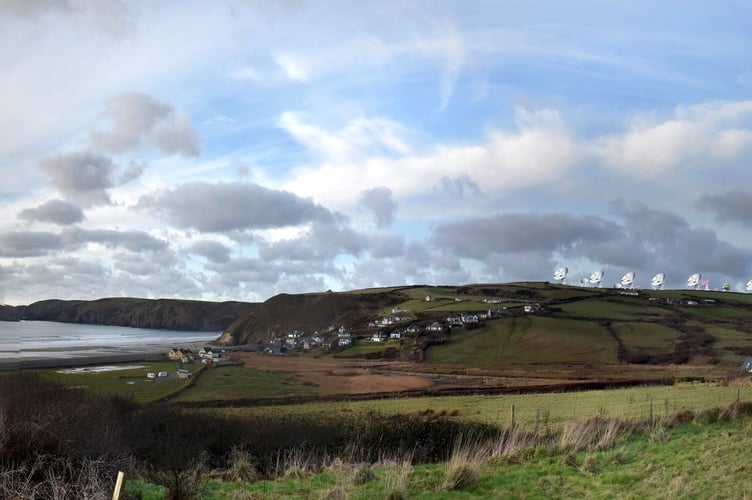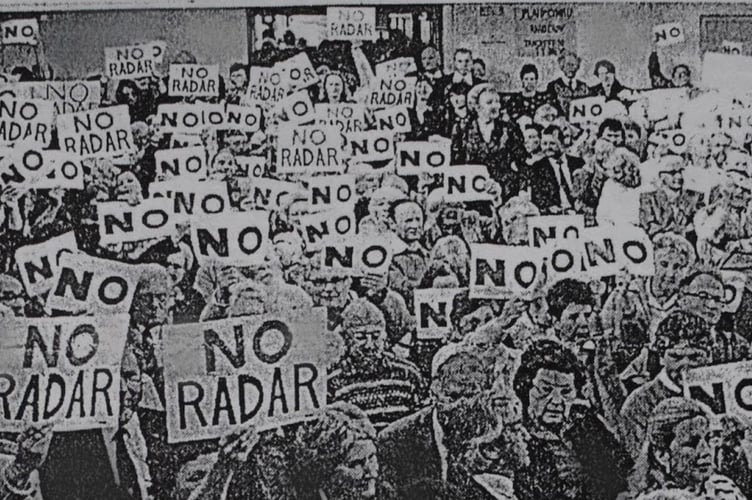A public meeting held at Solva Memorial Hall was ‘packed to the rafters’ with concerned residents - as campaigners fighting against proposals to build a DARC space radar facility at a Pembrokeshire village highlighted the potential damage it would cause to both tourism and wildlife in a National Park.
Following the digital launch of the campaign ‘PARC Against DARC’ which has been set up aiming to stop the UK/US Military’s plans to create a 27 dish ‘Deep Space Advanced Radar Concept’ station at Cawdor Barracks in Brawdy, a further public meeting was held on June 27.
Several speakers took to the stage and spoke about many of the key arguments laid out on the group’s campaign website www.parcagainstdarc.com

Emma Bowen, general manager of the Retreats Group of hotels spoke about the ‘negative impact’ radar would have on local tourism, stating: “As an accommodation provider set in the UK’s only truly coastal National Park, we are totally reliant on leisure tourists who come to enjoy the coast path, beaches, history and culture.
“If you were looking for a holiday location, would you choose somewhere next to 27 enormous radar structures?”
Roy Jones who headed up a similar campaign in the 90s spoke about the previously victorious campaign which included big rallies, fundraisers, public meetings and a massive community effort to halt the radar, which garnered support from organisations and politicians in Pembrokeshire, Cymru, Westminster and internationally, ultimately snowballing to such a level that it lead to the cancellation of the project.
Drawing attention to the proposed positioning of the Radars and the elevated nature of the proposed site, Roy explained: “This means that the massive brightly coloured array would be visible from many vantage points in the Pembrokeshire Coast National Park. A giant radar farm capable of scanning a third of every square millimetre of space around the Earth would make it the highest risk radio-frequency radiation project ever to be sited on British soil.”

Michail Davies of The South & West Wales Wildlife trust outlined the impacts the Radar installation would have on wildlife, telling the audience: “Lights and Manx Shearwaters don't mix.
“Brawdy is in sight from Skomer, the most important site in the world for this iconic seabird, Pembrokeshire's ‘albatross’. Already, significant numbers of fledging birds, starting their migration to South America, fly inland, towards our lights. DARC will only make this worse causing more avoidable deaths.”
Lead local campaigner Jim Scott encouraged everyone in attendance to get involved with the fight back, pointing out that this was in no way a ‘done deal’.
“The MOD are making out as if this will just need to pass through some parish council one afternoon and that then they can get on with building this carcinogenic, military monstrosity, but that is ludicrous! We know it would require specialist planning permission and there is no way on earth that we will allow our elected County Councillors in County Hall to let this get through. We will campaign on every level to stop this!” he said.




